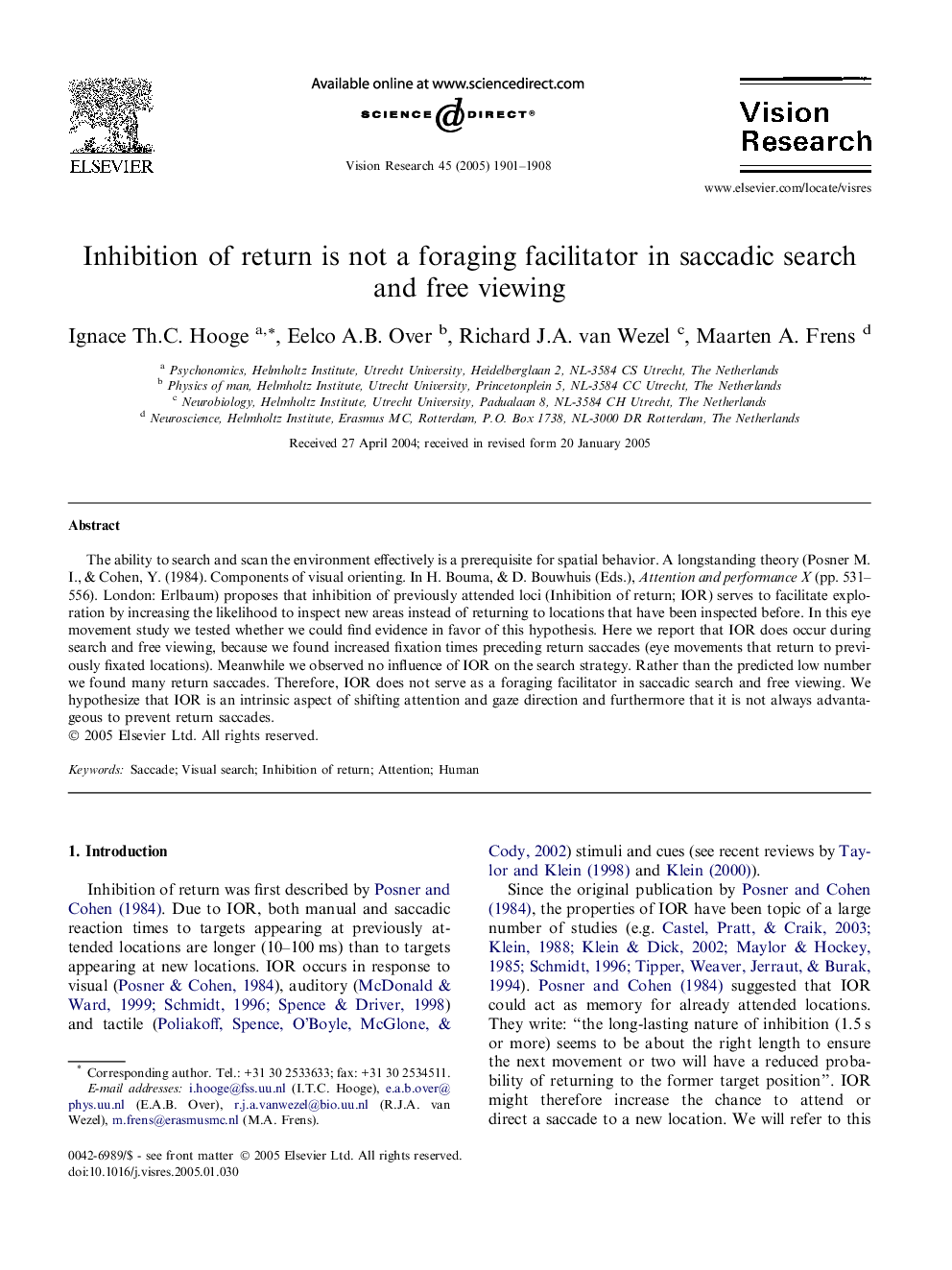| Article ID | Journal | Published Year | Pages | File Type |
|---|---|---|---|---|
| 9348425 | Vision Research | 2005 | 8 Pages |
Abstract
The ability to search and scan the environment effectively is a prerequisite for spatial behavior. A longstanding theory (Posner M. I., & Cohen, Y. (1984). Components of visual orienting. In H. Bouma, & D. Bouwhuis (Eds.), Attention and performance X (pp. 531-556). London: Erlbaum) proposes that inhibition of previously attended loci (Inhibition of return; IOR) serves to facilitate exploration by increasing the likelihood to inspect new areas instead of returning to locations that have been inspected before. In this eye movement study we tested whether we could find evidence in favor of this hypothesis. Here we report that IOR does occur during search and free viewing, because we found increased fixation times preceding return saccades (eye movements that return to previously fixated locations). Meanwhile we observed no influence of IOR on the search strategy. Rather than the predicted low number we found many return saccades. Therefore, IOR does not serve as a foraging facilitator in saccadic search and free viewing. We hypothesize that IOR is an intrinsic aspect of shifting attention and gaze direction and furthermore that it is not always advantageous to prevent return saccades.
Related Topics
Life Sciences
Neuroscience
Sensory Systems
Authors
Ignace Th.C. Hooge, Eelco A.B. Over, Richard J.A. van Wezel, Maarten A. Frens,
